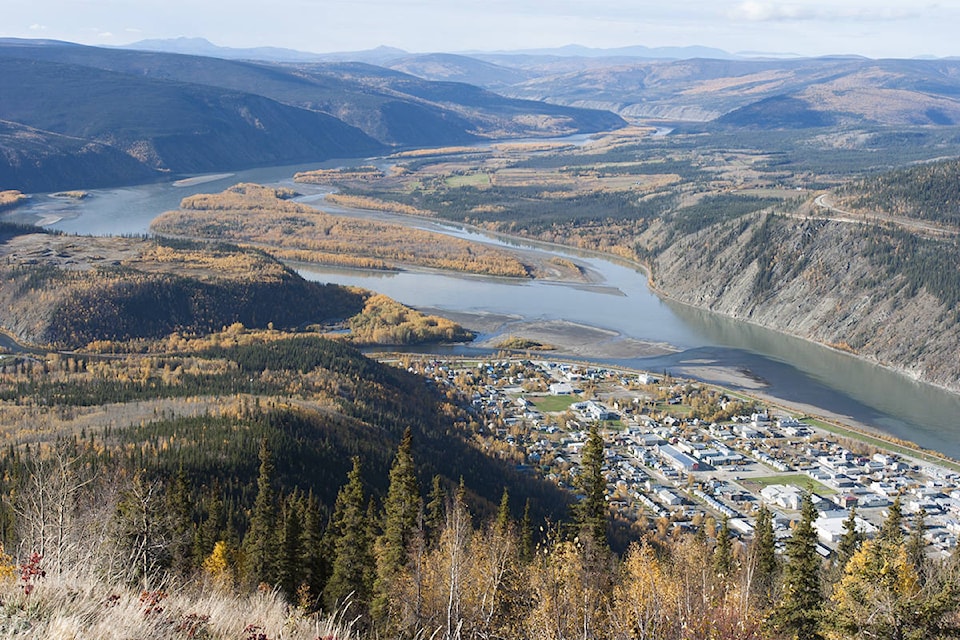Canada has withdrawn its bid to have a region of the Klondike declared a UNESCO world heritage site.
Parks Canada confirmed this week that the bid, which has been in the works for years and cost at least $700,000, was withdrawn after concerns were raised by an independent advisory council.
The World Heritage Committee was supposed to start considering the Yukon’s nomination at its meeting this July. Now Canadian officials say it will be likely be at least 2021 before the idea could be considered again.
The Yukon’s bid, known as the Trondek-Klondike proposal, was being organized by a committee led by the by Tr’ondëk Hwëch’in First Nation and including representatives from the Yukon government. The project was also supported by Parks Canada.
Project manager Molly Shore said the decision to withdraw was made last week in response to an evaluation of the site by the International Council on Monuments and Sites (ICOMOS). That group of experts advises the World Heritage Committee on cultural nominations.
The council had trouble understanding parts of Yukon’s proposal, Shore said.
“There’s still a mismatch of understanding between how we see our place and how they see it from the outside,” she said.
The proposed world heritage site comprises approximately 38,000 hectares of land and water including parts of the Klondike River, Bonanza Creek, and Yukon River valleys. According to the nomination documents it extends approximately 80 kilometres northwest from Dawson City along the Yukon River, and approximately 30 kilometres southeast into the Bonanza Creek valley. It includes Tr’ondëk Hwëch’in territory and historic Klondike goldfields.
Those in favour of the world heritage site designation are arguing the region should be considered a “cultural landscape” because “this landscape surrounding Dawson is unique in how its been shaped over time by both miners and Indigenous people since the Klondike Gold Rush,” Shore said.
Canada believes the continuation of placer mining is itself a tradition and heritage value that should be celebrated.
The Yukon proposal made mining a “cornerstone of the site that we presented,” Shore said, something that is a new concept to the international heritage community.
Explaining that and “having a mutual understanding of what does it mean to have mining at a world heritage site,” has been part of the struggle, Shore said.
“I don’t know of any other (sites) that have it so it’s considered a fairly progressive nomination by Canada.”
Current UNESCO world heritage sites include the Vatican, the Sydney Opera House and Canada’s national park system, including Kluane National Park.
In a statement to the News Parks Canada officials said ICOMOS “indicated they had expected to see a different focus on Tr’ondëk Hwëch’in culture in the nomination. In their view, the proposed boundaries did not adequately capture the landscape elements of the site and they expressed concerns about mining within the property.”
Both the territorial and federal government have refused to release ICOMOS’s report. Yukon cabinet spokesperson Sunny Patch said the report was the property of Parks Canada. Parks Canada denied that but wouldn’t say who the report did belong to.
Tr’ondëk Hwëch’in First Nation chief Roberta Joseph could not be reached in time for today’s deadline.
Shore said she would look into making the report public but couldn’t release it now because she hasn’t had a chance to “fully debrief” with the advisory committee and stakeholders.
Shore said the various people involved haven’t decided yet what their next step is going to be. Withdrawing from this year’s round of consideration doesn’t mean the project is dead. By withdrawing before the World Heritage Committee had a chance to consider the proposal, proponents of the plan are giving themselves more time.
If the nomination had gone ahead there would have been a much tighter timeline to change people’s minds, she said.
“We’re using it as an opportunity to reach out to ICOMOS and find a way of having a mutual understanding of what we proposed here and what our site’s heritage values are.”
Intake for proposed new world heritage sites only happens once a year. The deadline is Feb. 1. The committee meets in July of the following year to consider nominations.
Between those two dates a representative from ICOMOS will visit each proposed site, which happened for a week last August, Shore said. The Canadians also submitted multiple documents to ICOMOS on top of their original nomination proposal.
The structured timeline means it will likely be years before the Yukon nomination could be submitted again.
“Most likely it would be Feb. 1, 2020, just because the turn-around probably is not enough time,” Shore said.
If the nomination is submitted in 2020, ICOMOS would return for another visit and the project could be considered at the heritage committee meeting in July 2021.
In 2016, the Canadian Northern Economic Development Agency gave the project $700,000 over three years to support the nomination process. The Tr’ondëk Hwëch’in First Nation also contributed $59,662 to the project, according to an announcement from 2016.
That money is slated to run out this year, Shore said.
“I think we’re going to have to talk to CanNor about using the rest of that money and then it’s essentially not a question that has been answered.”
A major part of the project’s costs in the last few years has been compiling and commissioning research, she said.
“We wouldn’t have to do that again, we have this whole base of research to work with so that will serve us well in the future,” Shore said.
Premier Sandy Silver, who is MLA for the riding of Klondike, said in a statement that he appreciates “that this news will be disappointing.”
Contact Ashley Joannou at ashleyj@yukon-news.com
